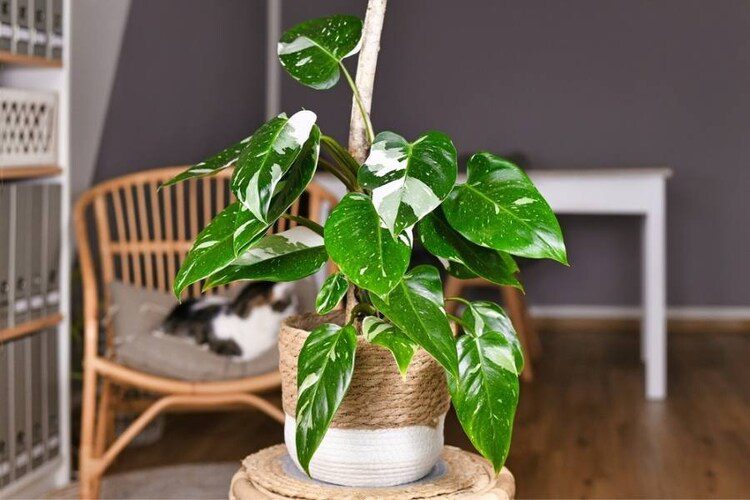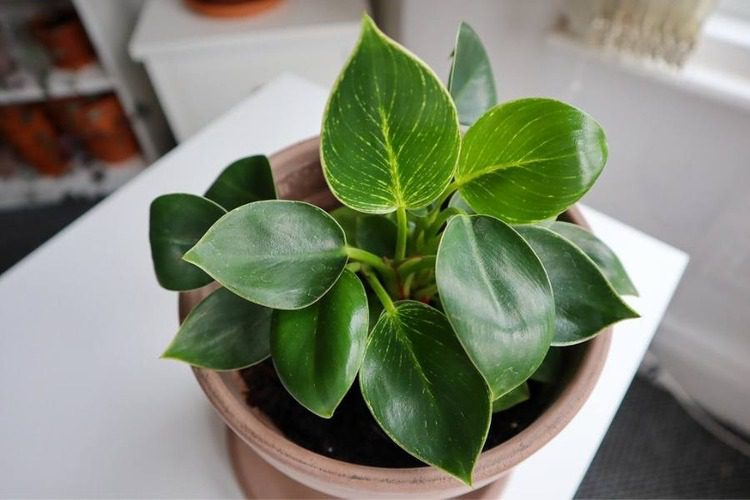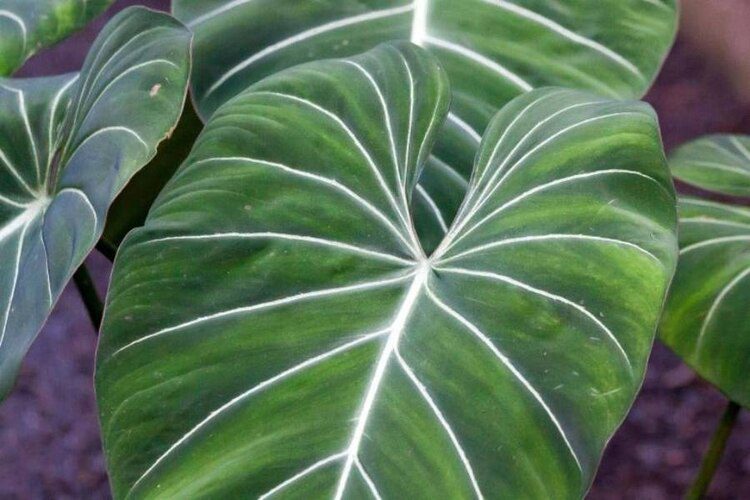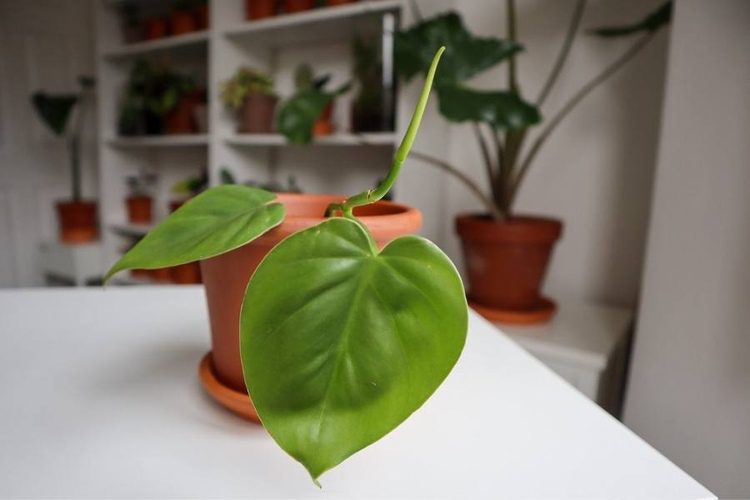How To Care For Philodendron Golden Dragon? Detail Guide

The Golden Dragon Philodendron is a common evergreen plant in the genus Philodendron. This beautiful plant is popular and is grown both indoors and outdoors. When starting to grow, many people often wonder how to care for this plant. If not done properly, the Philodendron golden dragon plant will wilt and droop leaves. If you have the same problem, this article is for you. Read on to find out!
How To Care For The Philodendron Golden Dragon?
Controlling environmental conditions such as water, soil, light, nutrients, or propagation will help you care for the Philodendron Golden Dragon effectively. This is not too complicated. The Golden Dragon is no exception. If you take care of it properly and regularly, this plant will be an effective natural air purifier. It will also add beauty to your home.
Water
The Philodendron’s original habitat is tropical, so it needs regular watering to thrive. You can schedule watering when the tree has grown eight to ten inches. With mature plants, all you need to do is not let the top layer of potting soil get too dry.
So try to test before you start. Excessive watering causes excess moisture, which can cause root rot. The result that you don’t want the most is that the tree will wither and die. Don’t let them happen.
Soil
The best soil medium for Philodendron Golden Dragon to grow is well-drained, fresh, and rich in organic matter. A mixture that you can refer to is peat with perlite or with vermiculite. The simpler choice is to use sphagnum moss entirely for growing golden dragon plants.
As the tree matures, you’ll need to repot it to make room for the plant’s roots to grow. The recommended potting mix is potting soil with dry peat moss or leaf mold, or you can try it in a terracotta pot.
Temperature
The temperature that Philodendron Golden Dragon requires is moderate. In cold areas, this golden dragon plant will grow best in the summer. You need to avoid direct exposure to extreme cold or scorching heat. Harsh environmental conditions will adversely affect the Golden Dragon.
That’s why you need to grow this tree indoors or in warm areas to avoid low temperatures that cause the golden dragon plant to wither.
The ideal temperature can vary depending on the time of day. The recommended optimal range is between 65 and 78 degrees Fahrenheit (F) during the day and 60 degrees Fahrenheit (F) at night.
Humidity
Philodendron Golden Dragon’s moisture level requirements are not extremely high. However, they grow better in conditions with abundant moisture in the air. To ensure this factor, you can consider installing an indoor air humidifier. It will help create a friendly environment for plants to grow.
Even so, this factor is not required, as the Philodendron is still able to tolerate low humidity. You just need to make sure the space isn’t too dry. One note is not to allow moisture to collect on the leaves, as it can attract pests and insects.
Fertilizer
Philodendron species are plants with high requirements for nutrients. You should fertilize regularly to add nitrogen to make golden dragon plants healthy, and the leaves grow stronger.
During the spring and summer periods, apply a standard liquid fertilizer about every two weeks. Its purpose is to provide nutrients for tree growth. Split the dose of fertilizer because providing many nutrients affects the golden dragon plant.
You also fertilize about six inches from the base. If not done properly, you will inadvertently limit the growth of trees.
If you grow Philodendrons in a low-light area, limit nutrient addition. On the contrary, you should fertilize more in moist soil to avoid damaging the roots.
Sunlight
The Golden Dragon is a plant that is not too picky about the amount of daily light. They prefer shade or indirect light rather than direct, bright light on the leaf surface. If the grow lights are too low, the golden dragon plant will be difficult to grow and will stunt. Conversely, UV rays from direct, bright light and direct sunlight that are too strong will burn the foliage.
The best place to place a Golden Dragon pot is next to window sills. The distance between it and the door frame should be one foot to limit the impact and temperature of the light. If you want to display your Golden Dragon outdoors, keep it in shaded places.
A sign that the tree has received too much light is when the leaves turn brown. Leaves with this condition will not be able to return to the way they were before, and you will have to cut them off.
Grooming And Pruning
When you spot wilted branches, you’ll need to be careful to prune them off the plant. If you damage the fresh branches and leaves, they will cause the tree to become withered and stunted.
Repotting
When you notice your Golden Dragon has grown too much, consider repotting it. The best time to repot the plant is in the spring when the plant’s roots begin to grow. At this point, the plant has come out of hibernation and is ready for a new phase. Another telltale sign is when you realize the plant roots have started to come out of the drain hole. You can perform this process whenever convenient, except during the hibernation phase.
The recommended pot size is 10 to 12 inches (25 to 30 cm). These types of pots also need to have adequate drainage holes to prevent root rot, or you can also use padding underneath.
Underneath the pot, you need to add a layer of pebbles to keep the water at the top and drain it more easily.
Propagation
The common propagation method of the Golden Dragon is cutting and branching. The best time to practice propagation is during the growing season. Where the leaves come into contact with the stem, you can see a few brown nubs. When planting these bulbs, they will take root after a while.
The simplest method of propagating a philodendron is to partially cut the root and drop it in a pot of water. You also need to add a piece of activated charcoal to avoid root rot. Similarly, you can also pin the vines at the base to the organic soil with bent wire or pins.
Over time, these parts will grow new roots and slowly develop into a complete plant.
Philodendron Golden Dragon Plant: Highlighted Features
The Golden Dragon tree appears everywhere in North, Central, and South America. However, this tree is especially suitable for places with warm climates or tropical regions.
To take care of these plants indoors in the best possible way, you will need to understand their characteristics and construction.
Size
The Philodendron Golden Dragon is a medium-sized tree. However, you will be surprised because their height can reach up to 25 inches with proper care.
Its usual length can rise strongly, up to 6 to 12 inches. Many people are even able to plant a pole for the trunk to lean on and grow taller than usual.
Leaves
The size of the leaf is the most specific structure of the stem. This foliage has verdant, large, and vigorous growth. The color of the leaves is usually dark green and sometimes speckled with yellow. So, it gives your living space an aesthetic look and is a perfect complement.
If you are concerned about these spots, rest assured that they will not be permanent. They will gradually fade over time.
Pressure Tolerance
Their trunks are very thick and stout, so their ability to withstand pressure is moderate. However, you should not be subjective about this advantage. High pressure will lead to the wear and tear of Philodendron Golden Dragon plants. Thus, it restricts tree growth.
Height
Lime Fiddle’s size ranges from small to medium. Its length ranges from six, eight, and twelve inches. However, you can improve the size of the tree with proper care and protection. The maximum length can range from 20 to 25 inches.
Humidity
The Golden Dragon’s ability to tolerate moisture is quite good. The higher the humidity in the air, the stronger the Philodendron Golden Dragon plant will grow.
Even so, you do not need to worry about growing this tree indoors. They can still grow in dry and low-humidity environments. Taking care of Philodendrons is not difficult when their environmental requirements are not too high. However, low humidity can lead to yellowing or curling leaves, so it’s advisable to maintain high humidity levels.
Toxicity
The Philodendron Genus is a plant that is poisonous when consumed by ingestion. Inside this tree is a large amount of calcium oxalate crystals that cause symptoms of poisoning. Therefore, you should not leave them out of the reach of animals or children. If accidentally swallowed by your baby or pet, contact emergency services.
Flowers
Lime Fiddle is not a flowering tree. However, its beauty is not in this part. Instead, the glossy leaves with unique color combinations are the most beautiful and distinctive features of the tree’s structure.
Pest Resistance
Some common insects that can harm and negatively affect Lime Fiddle are spider mites, scale beetles, and mealybugs.
Normally, pests have a hard time getting into healthy stems. However, these organisms pose a threat to Philodendron Golden Dragon plants with weakened immune systems that are already suffering from bacterial or fungal diseases.
Drought Tolerance
The Philodendron Golden Dragon’s drought tolerance is very high because its habitat is arid and lacks moisture. However, it still needs a minimum amount of water to sustain life. If the humidity is much lower than this, the tree will wither and possibly die.
Disease Resistance
This Philodendron Golden Dragon plant is moderately resistant to disease. If bacteria and fungi can invade to attack the tree, the yellow spots turn reddish-brown when the disease is severe.
You can rest assured that Lime Fiddle’s risk of infection is moderate. Actively observing the condition of the tree will help you prevent future consequences.
Dormancy
Autumn and winter are the dormant periods of the Philodendron Golden Dragon. If you don’t take care of them properly, they can even drop their leaves and die. This condition is not ideal for green plants to grow. The only parts that can still spawn are the vines.
The right method of care for the situation when the tree is dormant is to limit the amount of periodic watering. You just need to make sure to keep the soil at a minimum moisture level. To avoid dehydration, we recommend using a mist or spray bottle for your Philodendron Golden Dragon plants. You should also limit fertilizing to avoid unnecessary waste and damage.
For those looking to grow a new Philodendron, avoid this dormant period. This period is also not suitable for propagation or pruning.
Conclusion
Philodendron Golden Dragon is a beautiful tropical plant that is evergreen and easy to care for. This tropical plant requires moderate humidity, avoidance of direct sunlight, nutritious soil, and a regular fertilizing schedule. Although the sequence sounds lengthy, you will quickly get used to it and make it a habit after only a few months of care. Be patient, and it will be well worth it. This plant will create a focal point for your home’s living space.
FAQs
Related post:




